Moots Routt Build & Review
I'm normally skeptical of any superlative description of a bike frame, but yeah, Ti really does have a glide-y feel to it.
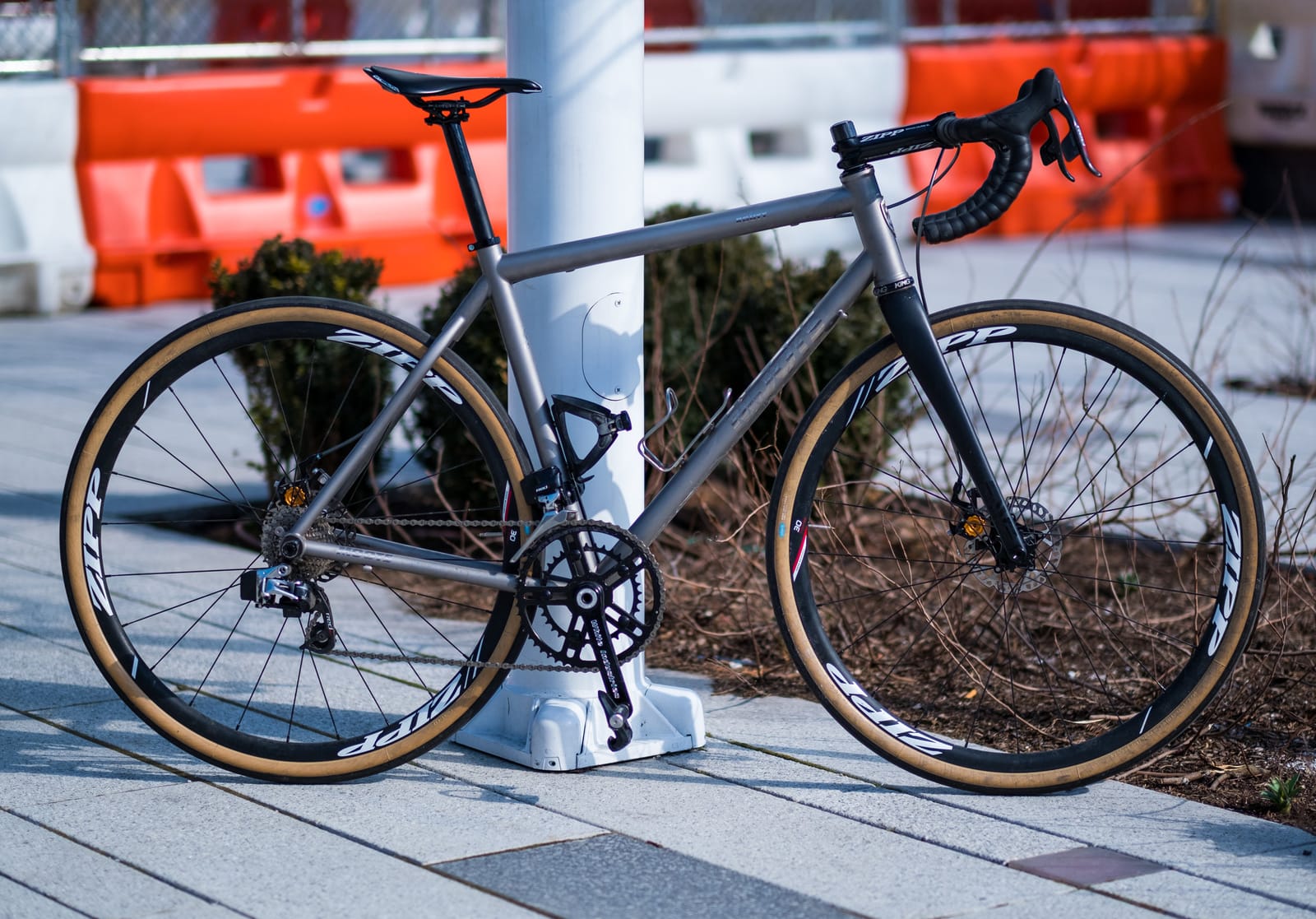
Ti bikes have always held a special place in my heart.
My aunt and uncles owned a bike shop in Northern California, and my cousins and I grew up together in the shop. I was a pretty mediocre mechanic, but I learned a lot about the basics, from wheel truing to tuneups, from overhauls to the rules of right and wrong for componentry or frame selection. The shop sold Treks, Kleins, Gary Fishers, and always had a couple Lightspeed titanium bikes on the wall.
Local multisport legend, family friend, and frequent customer Mike Pigg was sponsored by Trek (anyone remember the Y-Foil?), which was cool, but the best, most dedicated riders in the area rode Litespeed. Arcata may be in California, but its climate is firmly Pacific Northwest, so the durability and feel of Ti just made sense. My goodness did I want one, with all the OG polished Dura-Ace fixings.
We could never really afford any of that stuff, even at shop discount (I complained about this to my parents A LOT). Even so, at 15 I could have talked you through the differences between 6/4 and 3/2.5 ti. I’ve since forgotten about these details, but I do remember that it made me super popular at school.
So with our recent Moots announcement, I’ve been aggressively planning my next bike. It’ll be a Vamoots Disc RSL, set up for crit racing. I’m stoked. In the meantime, though, I learned that ACME had a floor demo model Routt in my size, so...I had to get it. “Routt” designates Moots’ wide-tire do-it-all bikes: not as long or low as the Vamoots; room for 38s (or more); not as twitchy up front as their Psychlo-X cross bike, and with a BB drop tuned for bombing descents and railing corners, instead of pedaling through them'; fender mounts, with room to use them. You get the picture. Moots make a wide-clearance version (Routt 45), a gravel racing version (Routt RSL), and a...regular? version, which I now own.
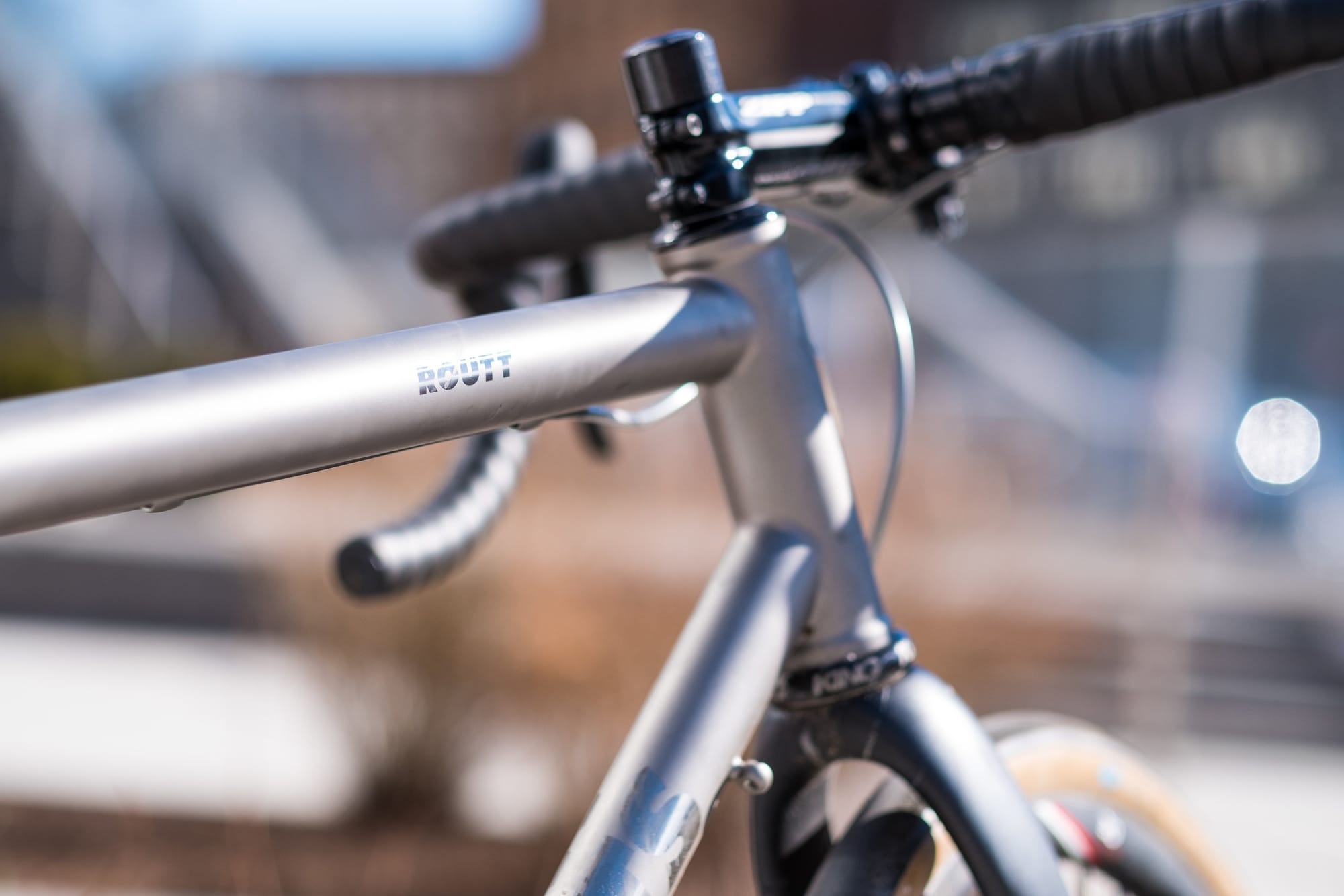
My version is a couple years behind the times, so it has post-mount brakes instead of flat mount, and its dropouts are the welded Breezer-style versions, not the trick 3D-printed ones. Oh well, I guess: that just means I get more of Moots’ beautiful double-pass welds to look at. (Also: can I say something real quick about rear post-mount brakes? It’s about 10x easier to work on them than flat-mount, because the bolts are where you can see them, and the routing is dead simple. No need to kick it to the curb just yet.)
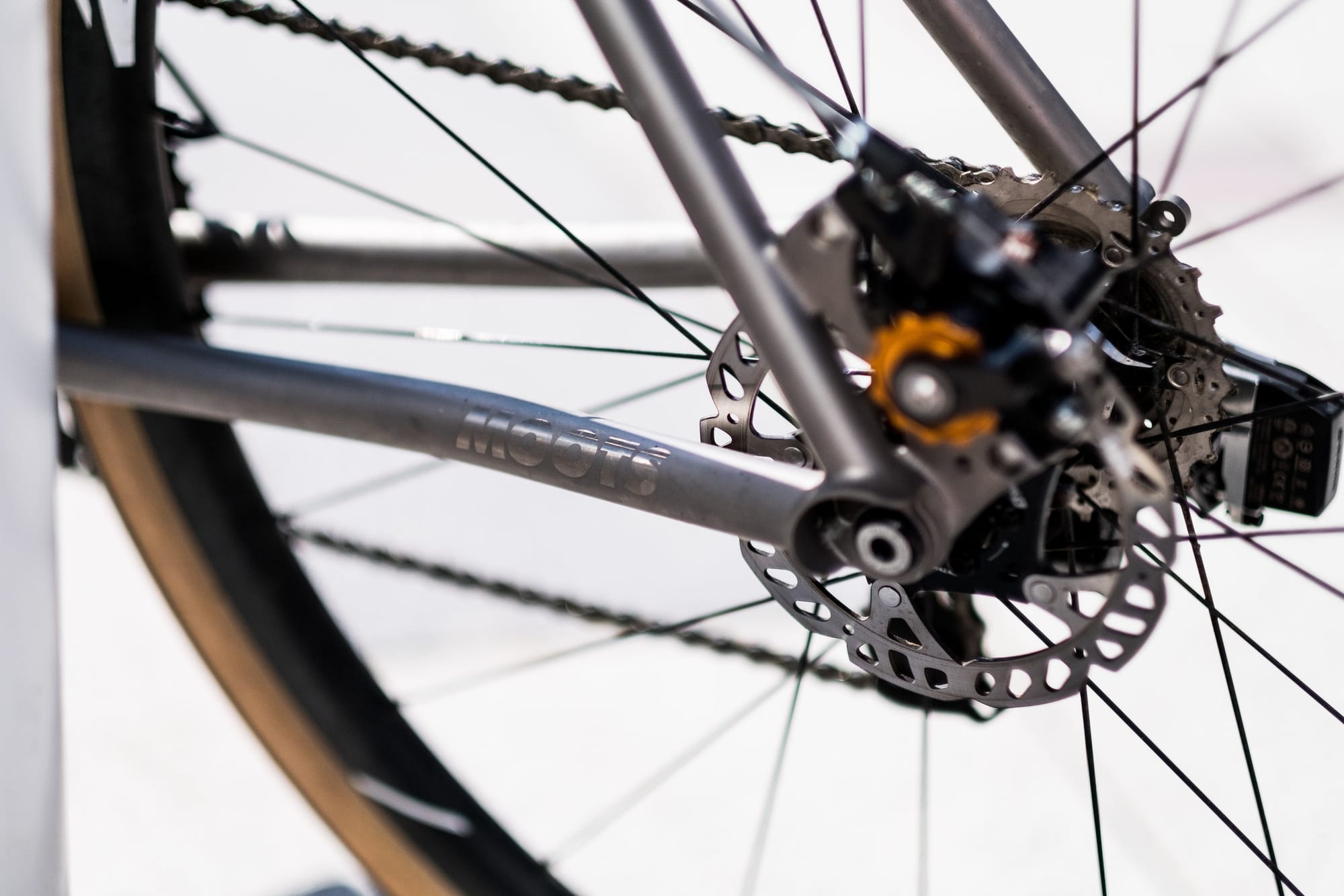
It’s got polished logos, which I didn’t know I’d like, but now that I’ve looked at them for a few days...damn. It’s the only choice, IMO. I mean, these bikes are forever bikes, so it makes sense to pick a finish that’s not going to go out of style anytime soon. The frame is set up with external routing for mechanical derailleurs and my choice of cabled or hydraulic disc brakes, and in keeping with the rest of the bike, the braze-ons are special. They’re tapered ever so slightly end to end, with nicely rounded edges.
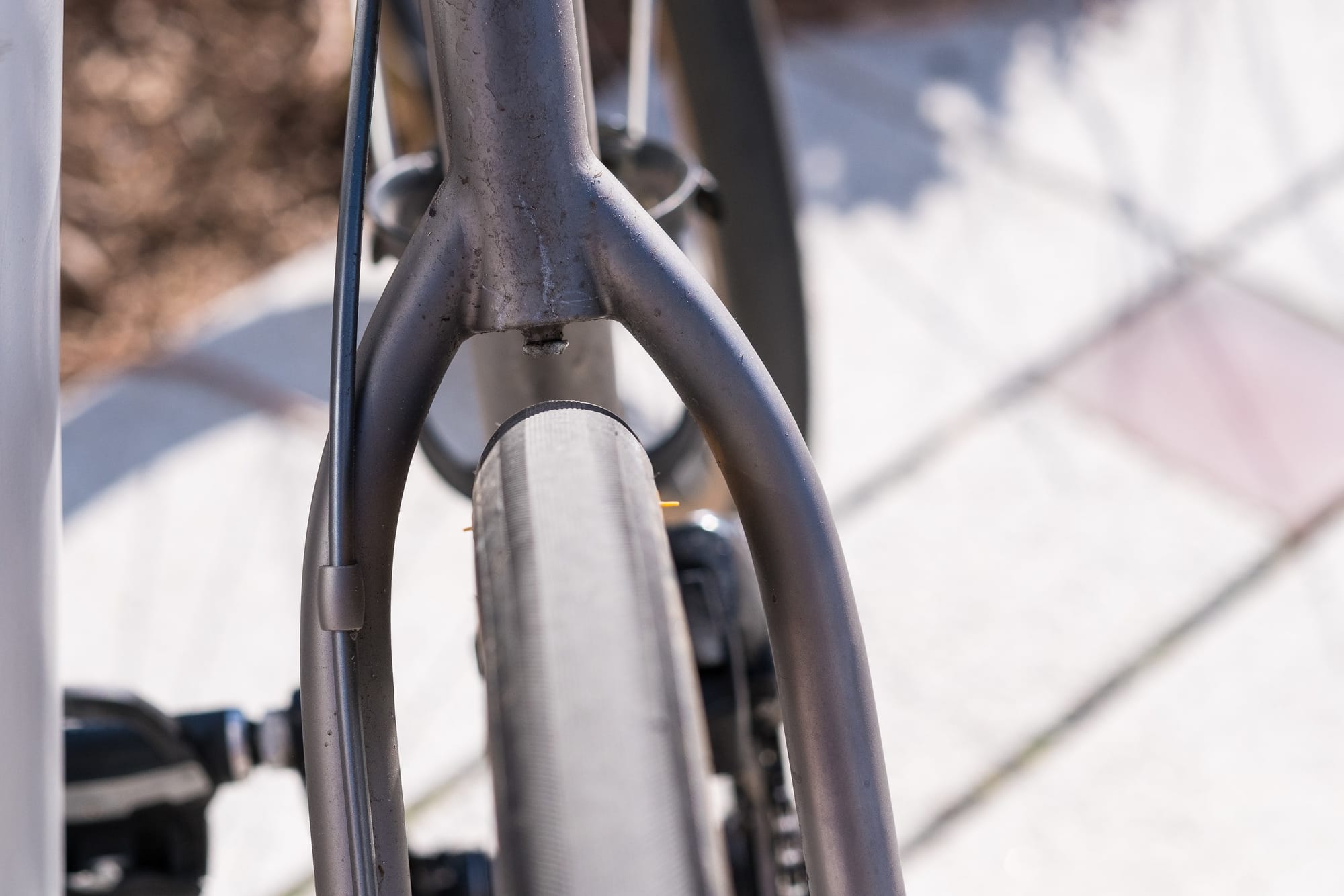
My Build
For this build, I was looking to create something of a do-it-all bike: something that would be race-able on the road, but could easily handle an adventure ride or even a cross race if my Garneau Steeples weren't available, heaven forbid.
Braking & Shifting
Having fallen in love with electronic shifting, I didn't want to go back to a cabled setup, but I also didn't want to send the frame back to Moots to add Di2 drilling – so I went with the 2x11s version of Sram Etap, which I got for a huge deal on eBay. I chose the mechanical, cabled braking option for a couple reasons: first, because the hoods look and feel great, unlike the HRD Etap counterparts; second, because I could run (and test) a variety of mechanical disc brake options. Some of my teammates have had decent luck with TRP's mechanically actuated, hydraulic HY/RD brakes, but I chose Paul's post-mount Klampers. If this is an adventure bike, it needs to be fixable more or less everywhere. If I pick up a solar USB charger for the Etap batteries and some replacement pads and cables, I should be able to take this bike far from home without concern. (Worst case scenario: a mechanical derailleur/lever can go on there, and almost any lever will work with the Klampers.)
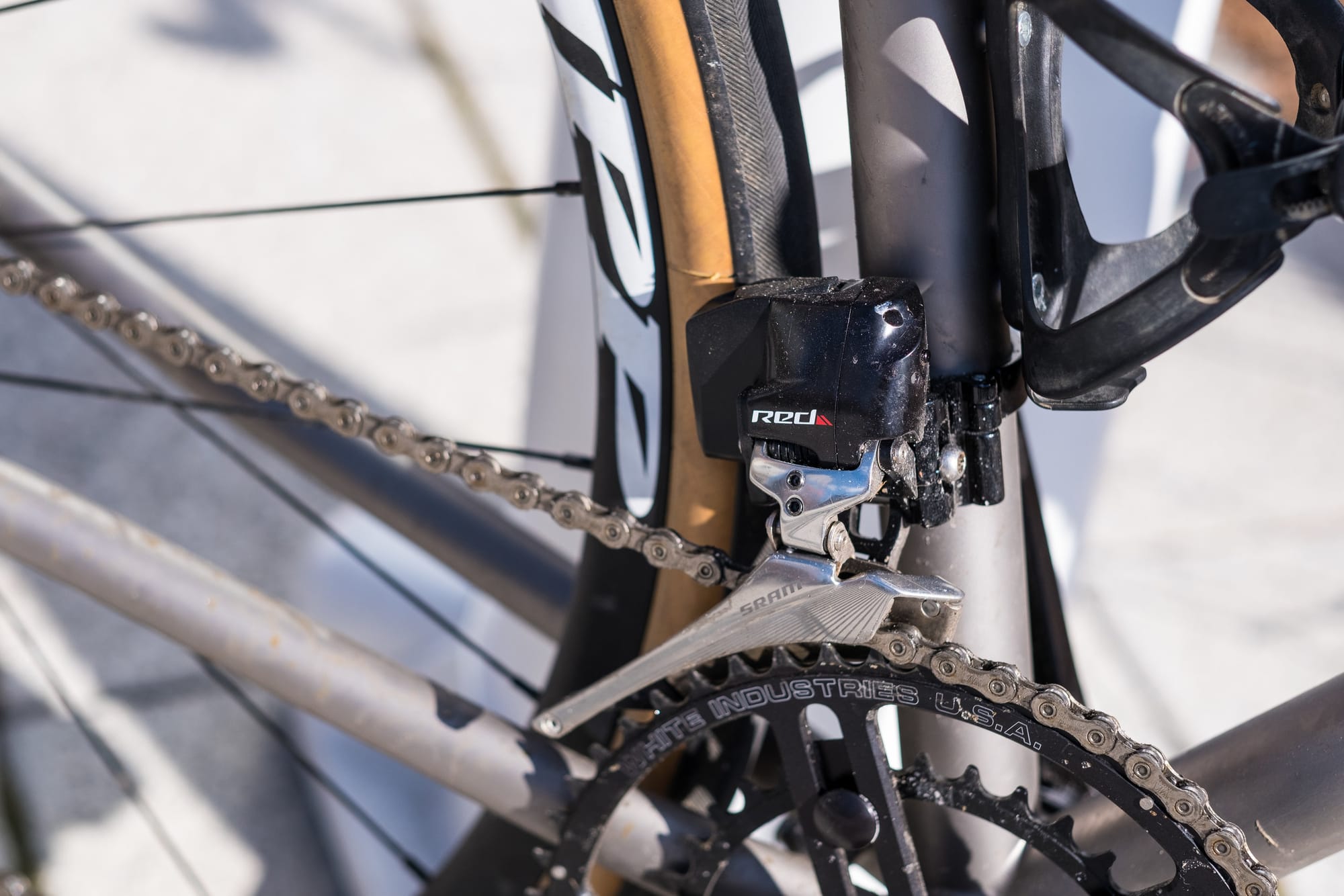
For the crankset, I went with White Industries' R30 crankset and BSA BB. I'll write a comprehensive review of this impressive piece of kit another time, but for now: I highly recommend it for folks that want to be able to adjust their gear choices easily, and want something that will wear in, versus wear out. Threaded BBs are the only way, folks.
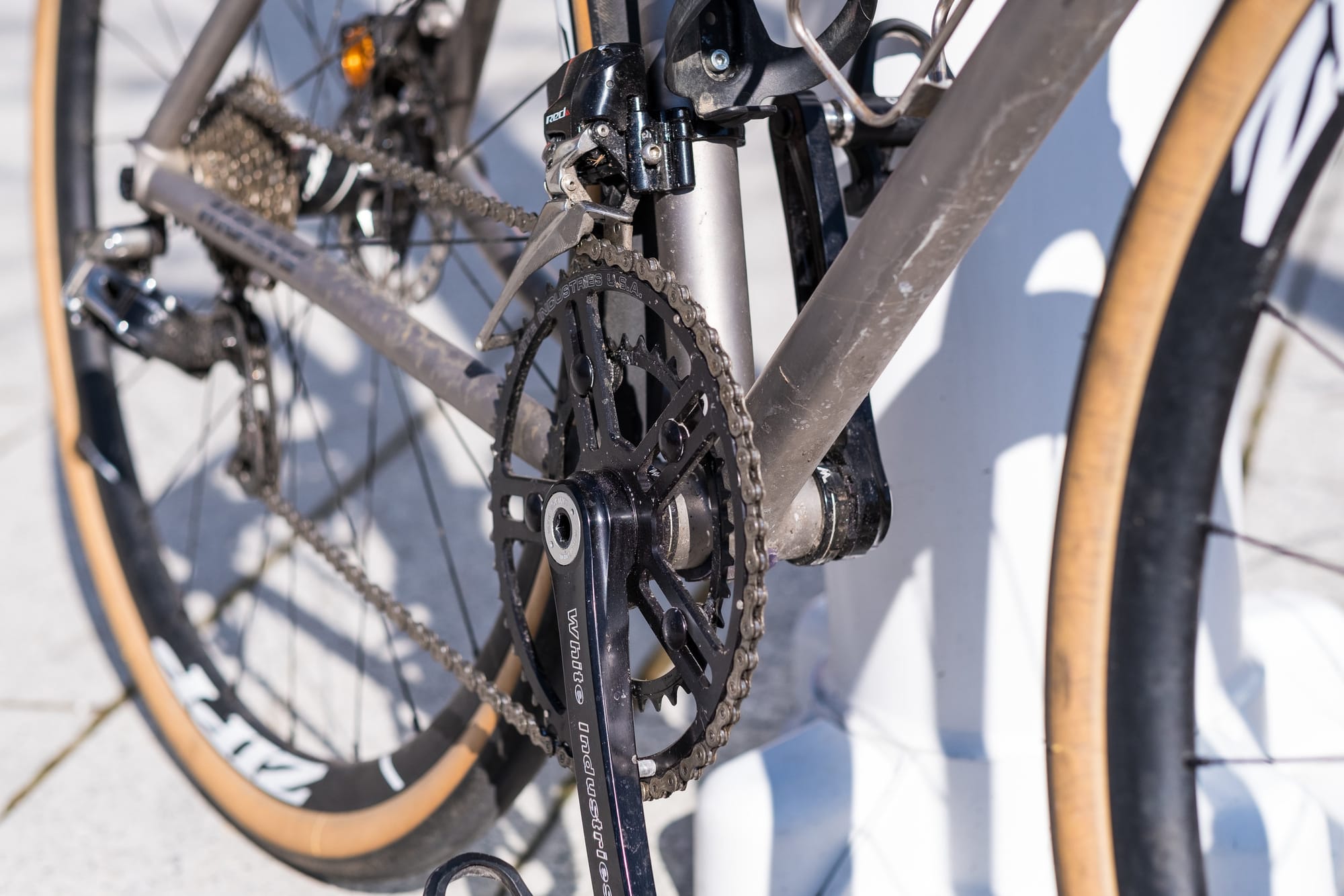
I went 52/36, which is right on the limit of what the Etap rear derailleur can manage. For cross, I’ll probably switch it over to 42/34. White Industries VBC rings go down to 24t for the inner, and 38t for the outer, in 2-tooth increments. Lots of flexibility.
Wheels & Tires
I pulled the Zipp 30 Course wheels from my cross bike, and stole a pair of Compass Bon Jon Pass 35c slicks from my girlfriend's bike. Plush, and not all that slow.
Cockpit
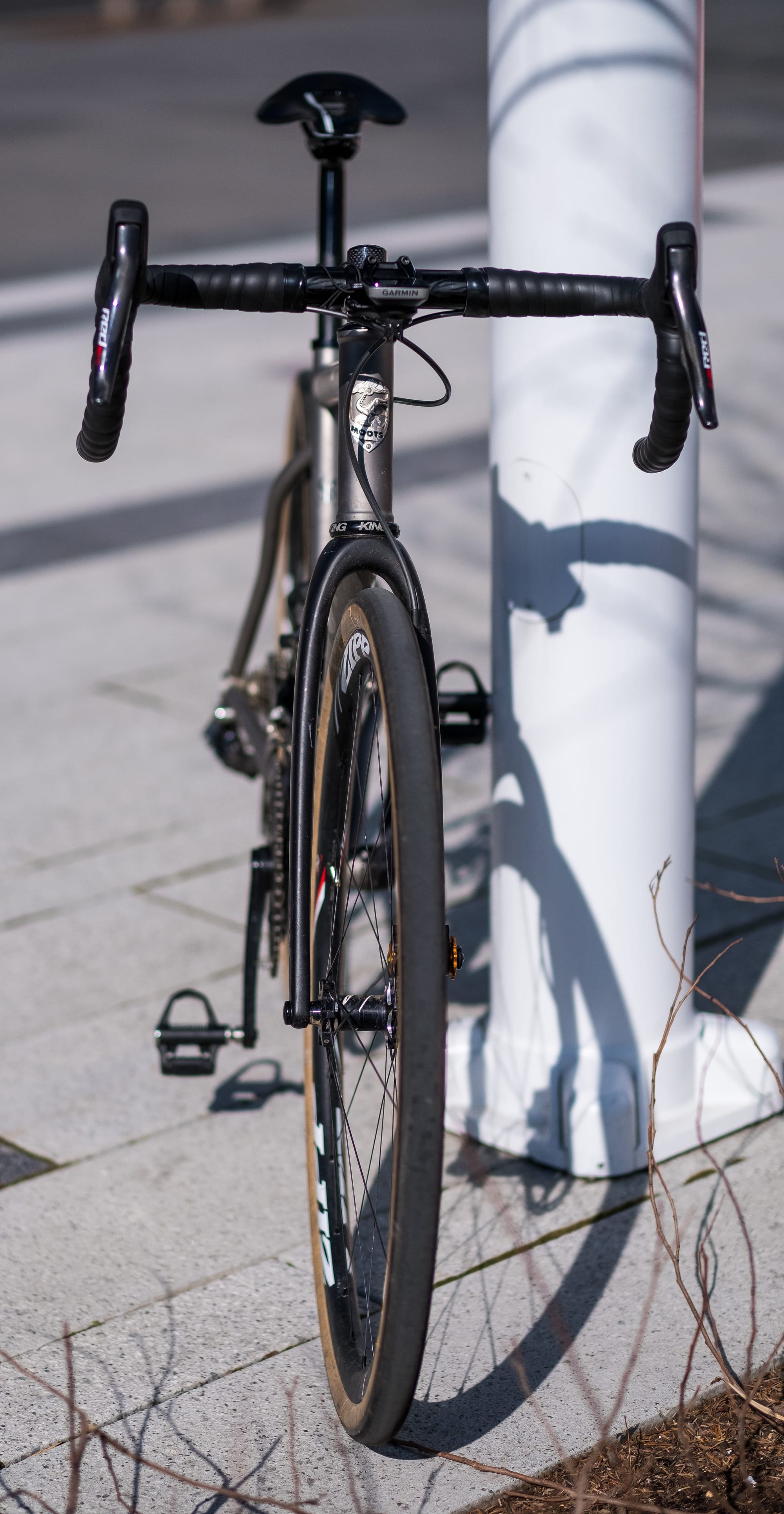
I just got a fit from my pal Colin at ACME, so the bike is set up about as long, low and forward as a gravel bike can be, with a 140mm stem and a 0° post, all from Zipp. So far, it’s still all-day comfortable, and at least based on recent workouts, I’m making 15-20 more watts than usual, all else being equal. Get fit by a professional, folks. It makes a huge difference.
My Garmin Vector 3 pedals complete the build – I think I got the only set in existence that works more than 80%, albeit with a firmware update. They are without a doubt the worst part of this bike.
Initial Impressions
I wasn't sure what to expect with a Ti bike. I've ridden plenty of steel and carbon bikes, but never had a chance to try Ti. It's plenty different from both materials. I raced (and loved) a Ritchey Road Logic steel frame in the past, and I could feel it bending underneath me during hard efforts. Even with a standard 68mm BB, I didn't feel any deflection from the Routt, even under a typically hard effort toward State Line.
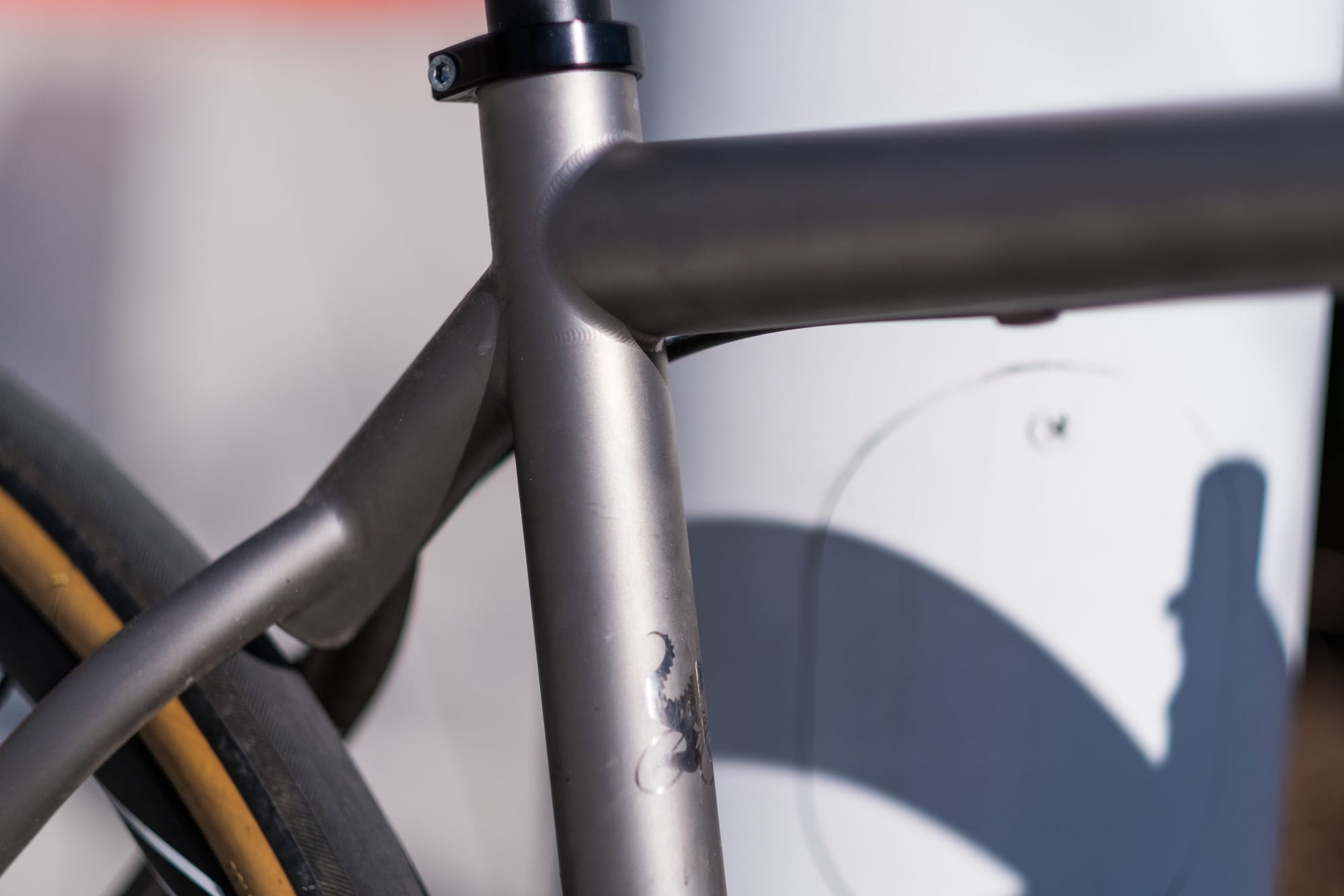
But I did notice an impressive amount of dampening – not compliance, really, because the chain- and seat-stays are both enormous – of road vibration, even when trialing a set of 30c tires, pumped up too high to 80psi. I'm normally skeptical of any superlative description of a bike frame, but yeah, Ti really does have a glide-y feel to it. It's cool. Not "throw away that bike you love" cool, but "I'd be more than happy if this was the last frame I ever own" cool.
Also: I still like Di2 better, but Etap is legit. And incredibly easy to work with.
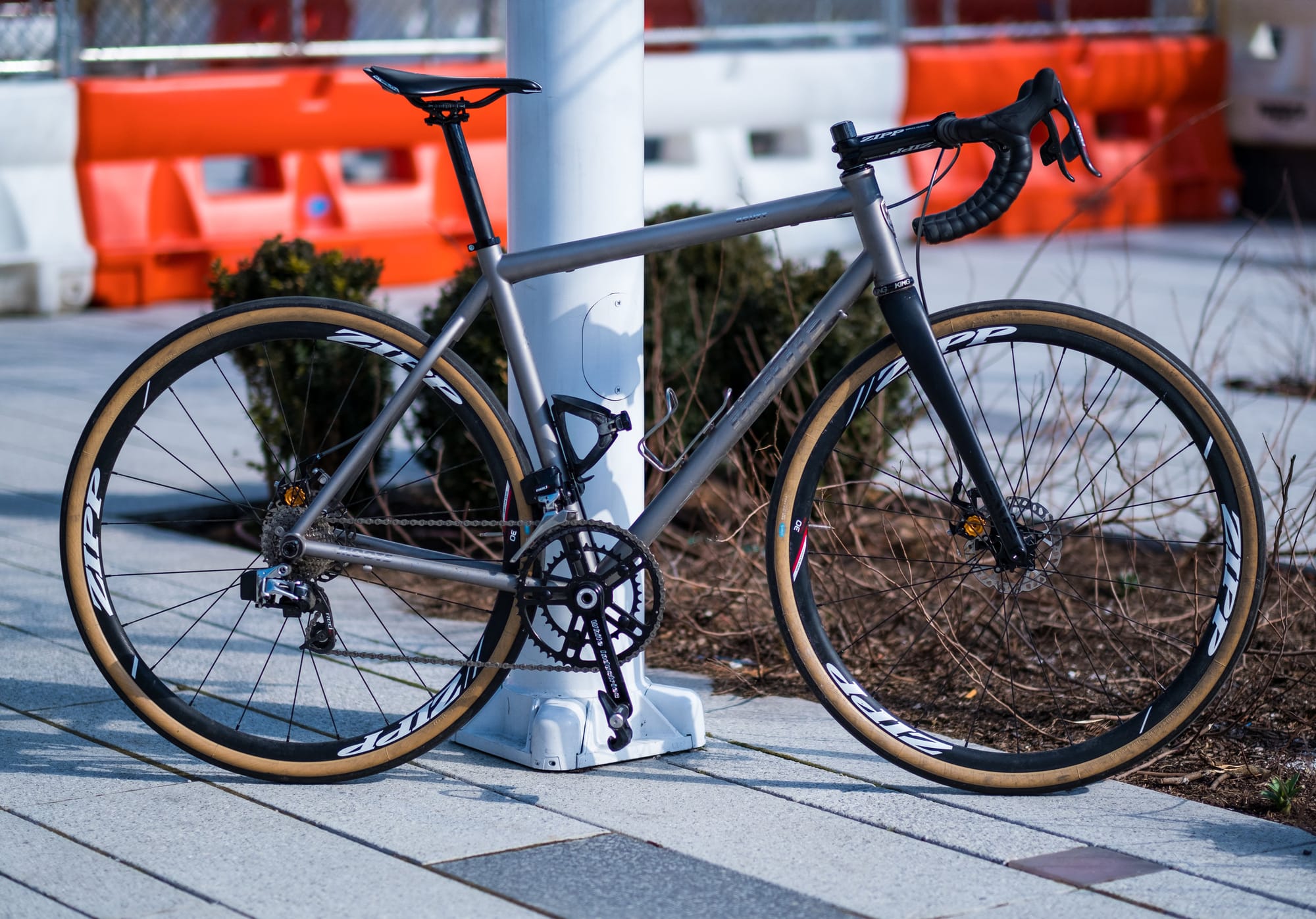

Comments